Pay respect to your elders, they always say.
Hockey’s history is as rich and respected as any major North American league. Its ultimate prize, Lord Stanley’s Cup, is covered with the names of legends, many of whom lifted this trophy after playing the season without any helmets.
The Original Six teams established a base upon which the NHL could grow and flourish and to this day, those six teams continue to be perennial powers with passionate fan bases. The league’s success stems from the legends who paved the way so that the beautiful game could be enjoyed today.
The game’s popularity grew wildly through its first several decades, but until 1992, most of the game’s franchises were based further north. The NHL and World Hockey Association placed several teams south of the 40th parallel with every franchise having varying levels of success. Obviously, the Los Angeles Kings, founded in 1967, found a suitable home in Southern California even though the franchise did not win a conference championship until approximately 30 years into its existence.
Among others, NHL teams popped up in Kansas City, St. Louis, Atlanta and Oakland prior to the 1992 expansion, but all faced monumental financial struggles. The WHA established teams in Miami, Houston, Los Angeles and San Fransisco prior to the league’s merger with the NHL. Both leagues saw potential in these growing southern markets, but making hockey popular was just as much of a cultural sell as it was a business one.
It makes sense: kids in the southern part of the country probably didn’t grow up playing hockey on frozen lakes like their northern counterparts. It can also be costly to maintain indoor ice rinks. Hockey remained a northern fan’s sport, but a southern shift was coming.
Regardless of your opinion, the league’s growth over the past 25 years has been substantial. 12 new franchises were born, not including the re-birth of the Ottawa Senators and Winnipeg Jets, so we’ll give you the skinny on each one. Before we move forward, we admit that Colorado and Columbus aren’t necessarily “Southern teams” and Minnesota is most definitely not in a warm climate, but they are part of the league’s expansion.
San Jose Sharks (1991)
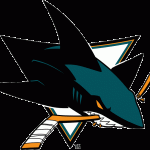 It had been 15 years since the California Golden Seals left the Bay Area to become the Cleveland Barons. Golden Seal owners Gordon and George Gund became part owners of the team in 1974 and helped move the franchise to Cleveland and eventually Minnesota, though they still wanted the Bay Area to have a team after the Golden Seals’ departure.
It had been 15 years since the California Golden Seals left the Bay Area to become the Cleveland Barons. Golden Seal owners Gordon and George Gund became part owners of the team in 1974 and helped move the franchise to Cleveland and eventually Minnesota, though they still wanted the Bay Area to have a team after the Golden Seals’ departure.
By 1990, former Hartford Whaler owner Howard Baldwin agreed to buy part of the Gunds’ share of the North Stars and in return, the Gunds were awarded an expansion team. The new owners took suggestions for the new team’s name, over 5,000 of them, and the “Blades” came out on top. Since the Gunds were not fond of the violent connotation which accompanied the name, the Sharks took the prize because of the bay’s large and diverse population of sharks.
Tampa Bay Lightning (1992)
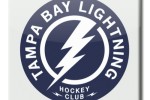 The Tampa Bay/St. Petersburg area was going to get an NHL franchise, but there was a question as to who would own it. Current Carolina Hurricanes owners Peter Karmanos and Jim Rutherford squared off against former Hall of Famers Phil and Tony Esposito. Though Karmanos and Rutherford had a larger financial portfolio, the Esposito brothers rounded up several Japanese business owners, and even New York Yankees owner George Steinbrenner, to level the playing field and eventually earn the bid. Former NHL president Gil Stein stated the tipping point was the Espositios’ willingness to pay the $50 million entrance fee up front.
The Tampa Bay/St. Petersburg area was going to get an NHL franchise, but there was a question as to who would own it. Current Carolina Hurricanes owners Peter Karmanos and Jim Rutherford squared off against former Hall of Famers Phil and Tony Esposito. Though Karmanos and Rutherford had a larger financial portfolio, the Esposito brothers rounded up several Japanese business owners, and even New York Yankees owner George Steinbrenner, to level the playing field and eventually earn the bid. Former NHL president Gil Stein stated the tipping point was the Espositios’ willingness to pay the $50 million entrance fee up front.
The franchise was given its name because of the area’s climate. According to a St. Petersburg Times report, Tampa Bay experienced a whopping 50,000 lighting strikes in June of 1994, earning the city the title of “Lightning Capital of the World.”
Dallas Stars (1993)
After seasons of financial losses and meager attendance, in addition to some players leaving to play for San Jose, the Minnesota North Stars dropped the “North” title and made their way to Texas. Owner Norman Green was partially convinced of Dallas’s hockey marketability by Dallas Cowboys quarterback Roger Staubach and the team moved into the Reunion Arena, also the home of the Dallas Mavericks. The NHL did promise Minnesotans that an NHL team would soon return to the land of 10,000 lakes.
Florida Panthers (1993)
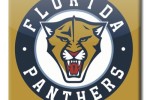 Blockbuster Video owner Wayne Huizenga, who also owned the Florida Marlins and a part of the Miami Dolphins, was awarded a franchise in December, 1992 despite the establishment of another Floridian team the year prior. The team would share Miami Arena with the Miami Heat for the first five years of its existence before moving out to Sunrise.
Blockbuster Video owner Wayne Huizenga, who also owned the Florida Marlins and a part of the Miami Dolphins, was awarded a franchise in December, 1992 despite the establishment of another Floridian team the year prior. The team would share Miami Arena with the Miami Heat for the first five years of its existence before moving out to Sunrise.
The Florida panther was listed as an endangered species around the time the franchise was seeking out a name. Given the species’ proximity to the area, not only did Huizenga decide to name the team after the animal, but the team also promises financial assist to the panther preservation cause.
Anaheim (Mighty) Ducks (1993)
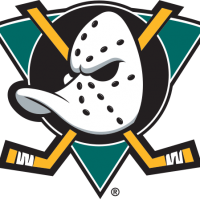 The Walt Disney Company was awarded a franchise on the same day as Huizenga and the Panthers. Since Anaheim would be moving into the Southern California market, the team was ordered to pay half of its $50 million entrance fee to the Los Angeles Kings. California’s third franchise had a brand new home in which to play, Anaheim Arena, conveniently located a few minutes away from Disneyland.
The Walt Disney Company was awarded a franchise on the same day as Huizenga and the Panthers. Since Anaheim would be moving into the Southern California market, the team was ordered to pay half of its $50 million entrance fee to the Los Angeles Kings. California’s third franchise had a brand new home in which to play, Anaheim Arena, conveniently located a few minutes away from Disneyland.
Disney also played a big factor in deciding the team’s name. Inspired by the 1992 Disney Classic The Mighty Ducks, the new team was given the same name and the new arena was nick-named “The Pond.” After the team was sold to Henry Samueli in 2005, the franchise dropped the “mighty” from its name in order to avoid any conflicts with Disney.
Colorado Avalanche (1995)
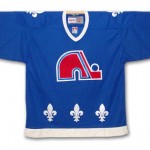 Technically, the Avalanche were founded as an organization in 1972 as members of the World Hockey Association. Back then, the team was known as the Quebec Nordiques who eventually joined the NHL in 1979. When the Nordiques were sold to the Denver-based COMSAT Entertainment Group and were renamed the “Avalanche” because of Colorado’s mountainous terrain.
Technically, the Avalanche were founded as an organization in 1972 as members of the World Hockey Association. Back then, the team was known as the Quebec Nordiques who eventually joined the NHL in 1979. When the Nordiques were sold to the Denver-based COMSAT Entertainment Group and were renamed the “Avalanche” because of Colorado’s mountainous terrain.
Joe Sakic, Peter Forsberg, Patrick Roy and company led the team to a Stanley Cup sweep over the Florida Panthers in 1996, joining the Washington Redskins as the only major four professional sports team to win a championship in its first year after relocation. Five years later, the Avalanche beat the New Jersey Devils in the Stanley Cup finals, a team which was once known as the Colorado Rockies.
Arizona (Phoenix) Coyotes (1996)
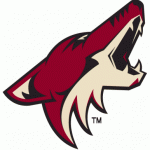 Like the Avalanche, the Coyotes were once a WHA team: the Winnipeg Jets. After Winnipeg became the NHL’s smallest market after Quebec’s exit in 1995, financial struggles followed and despite a passionate fan base, Phoenix Suns owner Jerry Colangelo lead a group to relocate the franchise to Arizona. A contest ensued to name the team and most of the suggestions related to the city’s proximity to the “Wild, Wild West” and desert. The Coyotes beat out suggestions like the “Mustangs,” “Outlaws,” and “Wranglers.”
Like the Avalanche, the Coyotes were once a WHA team: the Winnipeg Jets. After Winnipeg became the NHL’s smallest market after Quebec’s exit in 1995, financial struggles followed and despite a passionate fan base, Phoenix Suns owner Jerry Colangelo lead a group to relocate the franchise to Arizona. A contest ensued to name the team and most of the suggestions related to the city’s proximity to the “Wild, Wild West” and desert. The Coyotes beat out suggestions like the “Mustangs,” “Outlaws,” and “Wranglers.”
Carolina Hurricanes (1997)
 Yet another team to stem from the WHA; this time around, Carolina’s roots can be traced back to the New England Whalers, who eventually became the Hartford Whalers upon their entrance to the NHL. Hartford stood as the smallest NHL market in the country and struggled to compete for fan commitment with its neighbors in New York and Boston.
Yet another team to stem from the WHA; this time around, Carolina’s roots can be traced back to the New England Whalers, who eventually became the Hartford Whalers upon their entrance to the NHL. Hartford stood as the smallest NHL market in the country and struggled to compete for fan commitment with its neighbors in New York and Boston.
Owner Peter Karmanos moved the team to North Carolina after failing to negotiate for a newer arena in Hartford and decided on the “Hurricanes” because of the state’s history with Atlantic hurricanes. The team’s color scheme was also based off of that of North Carolina State’s, with whom the Hurricanes originally shared the Entertainment and Sports Arena in Raleigh.
Nashville Predators (1998)
 The city of Nashville initially wanted the Sacramento Kings to relocate to Tennessee, but Wisconsin businessman Craig Leipold lead a group to lobby Gary Bettman to consider Nashville as a possible spot for NHL expansion. After visiting the city, the NHL stated if Nashville could sell at least 12,000 season tickets and have its arena ready to operate, the Predators could play. Nashville was conditionally awarded its franchise at the same time as Columbus, Minnesota and Atlanta, but since its arena was ready first, the Predators were the first of the bunch to play.
The city of Nashville initially wanted the Sacramento Kings to relocate to Tennessee, but Wisconsin businessman Craig Leipold lead a group to lobby Gary Bettman to consider Nashville as a possible spot for NHL expansion. After visiting the city, the NHL stated if Nashville could sell at least 12,000 season tickets and have its arena ready to operate, the Predators could play. Nashville was conditionally awarded its franchise at the same time as Columbus, Minnesota and Atlanta, but since its arena was ready first, the Predators were the first of the bunch to play.
The organization announced its logo of a saber-toothed cat to pay homage to the skeleton of a saber-toothed cat found during the construction of the UBS tower in downtown Nashville. Fans narrowed the team name down to three names: “Tigers,” “Fury,” and “Attack,” but Leipold’s own submission of “Predators” ended up winning the fan vote.
Atlanta Thrashers (1999)
 The city of Atlanta has not had a tremendous amount of success hanging onto hockey teams. Two decades prior, the Atlanta Flames packed up shop and moved to Calgary, but the city met the league’s requirements of fan support and a functional arena, so the Thrashers were born. The old Flames were the league’s first venture into the Deep South and many had worries about how the new franchise wold survive.
The city of Atlanta has not had a tremendous amount of success hanging onto hockey teams. Two decades prior, the Atlanta Flames packed up shop and moved to Calgary, but the city met the league’s requirements of fan support and a functional arena, so the Thrashers were born. The old Flames were the league’s first venture into the Deep South and many had worries about how the new franchise wold survive.
Many residents wanted the new team to be named the “Flames” to honor the former franchise, but a tribute to the brown thrasher, Georgia’ state bird, eventually won out. Ironically, Atlanta’s new home in Philips Arena was built upon the same ground where the Omni Coliseum stood, the home of the Atlanta Flames. Unfortunately for the Thrasher-faithful, financial struggles forced owners to sell the team to the True North Sports & Entertainment and the Winnipeg Jets were re-born.
Minnesota Wild (2000)
After the Minnesota North Stars took off for Dallas in 1993, Bob Naegele Jr. headed the campaign to have an expansion team placed in Minnesota. Naegele and company had leverage on the situation sicne the league has promised the state that the state would eventually regain a franchise.
Fan voting narrowed down the team name to six options: Blue Ox, Freeze, Northern Lights, Voyageurs, White Bears and Wild. The last option eventually won the contest.
Columbus Blue Jackets (2000)
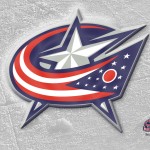 It had been two decades since the state of Ohio last fielded an NHL team when Columbus Hockey Limited, headed by John H. McConnell, began its pitch to the league for an expansion team. Concerns surrounded the building of a suitable arena as a referendum for public funds was shot down. Eventually, Nationwide Insurance agreed to flip the $150 million bill to erect the new arena and the franchise was born.
It had been two decades since the state of Ohio last fielded an NHL team when Columbus Hockey Limited, headed by John H. McConnell, began its pitch to the league for an expansion team. Concerns surrounded the building of a suitable arena as a referendum for public funds was shot down. Eventually, Nationwide Insurance agreed to flip the $150 million bill to erect the new arena and the franchise was born.
The organization held a naming contest and the final two options were the “Justice” and “Blue Jackets.” To pay homage to the state’s history with the American civil war, the Blue Jackets won the vote.
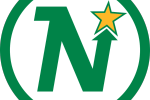
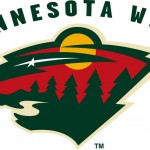
One thing nobody talks bout is NHL players from southern teams getting drafted into and playing in the NHL.
The last two years alone have seen the first players born and raised in Oklahoma and Florida to play in the league.
https://www.facebook.com/pages/Southern-Hockey-Problems/182899781848242
If you have read any my previous posts I have said to keep their US TV network they need teams in the Southern US. What’s odd about the Arizona situation is that while Coyotes are stumbling, Arizona State just went big time in College Hockey.
In brief, since they have keep teams in the South-the NHL has to hang a “protected sign” on two Southern markets and just state they are not going any where. Then work your butt off to build hockey in those markets. My choice would be Nashville and Tampa Bay. (Pick any two Southern markets you want-two need to stay.) To explain it further affiliated network stations do not have to carry every program the network sends down the pipe-only the owned stations do. If a local stations feels they can get better ratings showing something else than the NHL-they will. If enough stations do that-the NHL is gone from broadcast TV. That’s why some of the Southern teams need to stay. You need to grow the product before MLS passes the NHL by.
Remember NASCAR used to be a regional sport-now look at it.
Then fold-not move Florida and Arizona. Had Atlanta not moved-It would have been nice to move Arizona back to Winnipeg. If the Islanders can’t get their act together-they’re done too.
The cities mentioned as new markets (Seattle, Quebec, etc.) start fresh with new teams. Since the 4 major leagues with be at 32 teams eventually-if you drop those three, you would be adding five to get to 32. And no team in Vegas please.
Finally make a concerted effort to build college hockey in the US-we need more than 60 schools playing D1 hockey – that will also grow the sport.
To survive the sport needs to grow-period. Find some non traditional markets and go in work your butt off to grow the sport. That requires time, money and most importantly patience.
I want the NHL to remain as one of the “Big 4” leagues
Why aren’t the Ottawa Senators given a paragraph? Despite the fact that they used the same name as a team from the pre-Original 6 era, they were most certainly an expansion team in 1992 along with Tampa Bay.
We wanted to focus on the newer wave of teams. The Kings have been around for decades.
Um… The Kings don’t get a paragraph of their own?